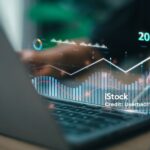Introduction to the article topic
Are you feeling the pinch in your wallet lately? Well, you’re not alone. The latest buzz on rajkotupdates.news reveals a staggering 7.5% jump in US inflation over the past 40 years! Hold onto your seats as we dive into the factors driving this inflation surge and how it’s reshaping our financial landscape. From skyrocketing prices to strategic money-saving tips, this article has your back in navigating these turbulent economic times. Let’s unravel the mysteries behind this unprecedented spike together!
rajkotupdates. news: inflation jumped 7.5 in 40 years
Have you noticed the recent buzz about the US inflation rate surging by 7.5% in just 40 years? The numbers speak volumes, highlighting a significant shift in economic dynamics. This sudden rise has left many individuals and businesses grappling with higher costs across various sectors.
Factors fueling this inflation hike are complex and multifaceted, ranging from suppmultifacetedruptions to increased consumer demand. The impact is widespread, affecting everything from daily essentials like groceries to larger investments such as housing prices and energy bills.
Comparing current inflation rates to those of previous decades sheds light on the magnitude of this increase. Understanding these trends can provide valuable insights into potential causes behind the recent spike in inflation levels.
As individuals navigate through these challenging times, it becomes crucial to explore proactive measures to safeguard finances against the effects of rising inflation. One can better weather the storm amidst economic uncertainties by staying informed and adopting smart financial strategies.
Factors contributing to the rise in inflation
Inflation doesn’t happen in isolation – it’s a complex phenomenon influenced by various factors. One major contributor to the rise in inflation is increased consumer demand. As people spend more, prices increase due to higher competition for goods and services.
Additionally, supply chain disruptions play a significant role in driving inflation rates higher. When production and distribution processes are disrupted, it can lead to shortages and price hikes as businesses struggle to meet demands.
Government policies also impact inflation levels. For instance, loose monetary policies that increase money supply can lead to devaluation of currency and subsequent price increases across the board.
Global events like pandemics or geopolitical tensions can exacerbate inflation by affecting worldwide trade flows and commodity prices. All these factors combined have contributed to the recent spike in US inflation rates.
Impact of high inflation on individuals and businesses
High inflation can have a significant impact on individuals and businesses alike. For individuals, it means the cost of living increases, making everyday expenses like groceries, gas, and housing more expensive. This puts a strain on budgets and reduces purchasing power. Businesses also feel the effects as they face higher operating costs due to increased raw materials and labour prices.
Moreover, high inflation can lead to economic uncertainty, affecting consumer confidence and investment decisions. Individuals may have to reduce discretionary spending while businesses struggle to maintain profit margins or pass on price hikes to customers.
Navigating through periods of high inflation requires adaptability and smart financial planning from individuals and businesses.
Comparison with previous inflation rates over the past 40 years
Over the past 40 years, inflation rates in the U.S.
S. have seen their fair share of fluctuations. The economy has witnessed various inflationary trends, from double-digit spikes to more stable periods. In the ’80s, inflation soared due to factors like oil price hikes and monetary policy decisions. The ’90s brought a period of relative stability with controlled inflation rates.
Moving into the early 2000s, inflation was moderate thanks to technological advancements and globalization impacting prices. However, the post-2008 financial crisis led to lower inflation rates as demand weakened amidst economic uncertainty. Fast forward to recent times, where unexpected events like supply chain disruptions and increased consumer spending have fueled the current spike in inflation levels.
This historical context sheds light on how different economic conditions have shaped inflation over four decades, providing valuable insight into understanding today’s rapidly rising prices.
Possible reasons for the sudden increase in inflation
The sudden increase in inflation can be attributed to various factors that have come into play recently. One possible reason for this uptick could be the global supply chain disruptions caused by the ongoing pandemic, leading to shortages and higher prices for goods and services.
Additionally, increased consumer demand as economies reopen after lockdowns may contribute to rising inflation rates. The surge in housing prices due to low inventory levels and high demand drives inflation upwards.
Moreover, government stimulus packages injecting more money into the economy can lead to excess liquidity, potentially fueling inflation further. Geopolitical tensions impacting commodity prices and trade relations might also play a role in the current inflationary pressures.
These combined factors create a complex environment where multiple elements influence the rise in inflation rates across different sectors of the economy.
Steps individuals can take to mitigate the effects of rising inflation
Individuals can take proactive steps to protect their finances during rising inflation. One approach is to create a budget that prioritizes essential expenses like housing and groceries while cutting back on non-essential items. Another strategy is to explore alternative transportation methods or carpooling to save on gas costs.
Diversifying investments can also help hedge against the impact of inflation. Consider investing in real estate, stocks, or commodities that have historically performed well during inflationary periods. Additionally, looking for ways to increase income through side hustles or freelance work can provide an extra financial cushion.
Furthermore, staying informed about economic trends and adjusting financial strategies accordingly is crucial. Keeping a close eye on interest rates and market fluctuations can help individuals make informed decisions about their savings and investments. Building an emergency fund for unexpected expenses can provide stability during uncertain economic times.
Potential solutions to combat high inflation

To combat high inflation, policymakers can implement monetary policies to tighten the money supply and control the rising prices. This could involve increasing interest rates to reduce borrowing and spending and curbing inflationary pressures. Additionally, fiscal measures such as reducing government spending or increasing taxes can help stabilize the economy.
Encouraging productivity growth through investments in infrastructure and innovation can also address inflationary trends by increasing supply to meet demand more efficiently. Furthermore, promoting market competition can prevent price gouging and encourage companies to keep prices competitive.
Educating the public on financial literacy is crucial during times of high inflation. Individuals should focus on diversifying their investments across asset classes like stocks, bonds, and real estate to hedge against rising costs. Moreover, adopting frugal spending habits and budgeting effectively can help households navigate periods of economic uncertainty caused by inflation.
A multifaceted approach involves economic policies and individual financial strategies essential in effectively combating high inflation.
Conclusion and future outlook on US inflation rate
As we look ahead, the future of the US inflation rate remains uncertain. With the recent 7.5% jump over 40 years, monitoring how this trend will evolve in the coming months and years is crucial. Economic experts closely analyze factors contributing to inflation, such as supply chain disruptions, rising energy prices, and increased consumer demand.
The Federal Reserve plays a significant role in managing inflation through its monetary policy decisions. The central bank’s strategies will be critical in stabilizing prices and ensuring economic growth while keeping inflation at bay. As individuals and businesses navigate these challenging times, staying informed about economic indicators and adjusting financial plans accordingly can help mitigate the effects of high inflation.
Looking forward, policymakers must remain vigilant in addressing potential causes of inflation to maintain a healthy economy for all Americans. By fostering innovation, promoting sustainable growth, and implementing effective policies, there is hope for a more stable future regarding the US inflation rate.
Introduction to the article and what it will cover
Are you curious about the recent surge in US inflation rates? Well, you’re in the right place! In this article by Rajkotupdates. News, we’ll dive into how inflation has skyrocketed by 7.5% over the past 40 years.
We’ll explore the factors contributing to this significant rise and its profound impact on individuals and businesses. From housing costs to everyday expenses like groceries and gas prices, no aspect of daily life remains untouched.
Stay tuned as we compare these current inflation levels with historical data from previous decades, shedding light on possible reasons for this sudden increase. Additionally, we’ll provide practical tips for safeguarding your finances during high inflation.
So buckle up and join us as we unravel the complexities of rising inflation rates in the US!
Explanation of inflation and its impact on the economy
Inflation is a key economic indicator that measures the rate at which prices for goods and services rise over time. When inflation occurs, each dollar you own buys a smaller percentage of goods or services. This means your purchasing power decreases as prices increase.
The impact of inflation on the economy can be far-reaching. It affects everything from consumers’ buying power to businesses’ production costs. High inflation rates can lead to uncertainty in financial markets, making it challenging for businesses to plan for the future.
Furthermore, inflation can erode savings and investments if interest rates do not keep pace with rising prices. Retirees living on fixed incomes may struggle as their money doesn’t stretch as far due to increased living costs.
Understanding how inflation influences the economy is crucial for policymakers and individuals alike. We can better prepare ourselves for financial challenges by staying informed about economic trends.
History of inflation in the U.S.
S. over the past 40 years
Over the past four decades, the United States has experienced fluctuations in inflation rates that have impacted the economy and everyday life. In the 1980s, double-digit inflation rates caused financial strain for many Americans, leading to challenges in budgeting and saving. The 1990s saw a period of lower inflation due to stable economic growth and controlled monetary policies.
As we entered the new millennium, inflation remained relatively steady until recent years when it began creeping up again. Factors such as increased consumer demand, supply chain disruptions, and rising commodity prices have contributed to this upward trend in inflation rates.
The Federal Reserve is crucial in managing inflation through its monetary policy decisions to balance price stability and employment goals and understand the U’s historical context.
S. inflation can provide valuable insights into current economic conditions and potential future trends.
Factors contributing to the recent spike in inflation
The recent spike in inflation in the U.S.
S. can be attributed to various factors that have collectively fueled this upward trend. One significant factor is the global supply chain disruptions caused by the ongoing pandemic, leading to shortages and increased production costs for many goods. This has put pressure on prices across different sectors, impacting consumer spending patterns.
Additionally, fiscal stimulus measures implemented by the government to support individuals and businesses during challenging times have injected substantial money into the economy. While these measures were necessary, they have also increased demand, further driving up prices.
Moreover, rising energy costs and transportation expenses have added to inflationary pressures as businesses pass these additional costs to consumers through higher prices for goods and services. Geopolitical tensions and natural disasters affecting key commodities like oil further exacerbated the situation.
Furthermore, changing consumer behaviour post-pandemic has resulted in shifts in spending habits towards certain products and services, creating an imbalance in supply and demand dynamics which can impact pricing levels significantly.
Impact of inflation on different aspects of daily life, such as housing, food, and gas prices
Have you noticed the impact of inflation on your daily expenses lately? It’s not just numbers on a screen; it directly affects your everyday life. Let’s start with housing – rising inflation often increases rent and mortgage payments, making it harder for individuals to afford stable housing. As for food prices, grocery bills can quickly increase as the cost of goods inflates.
Gas prices are another area where inflation hits hard. With transportation costs soaring, filling up your tank becomes more expensive daily. These price hikes ripple through the economy, affecting everything from commuting to shipping costs for businesses. The domino effect regarding inflation creeping into different aspects of our lives is real.
Navigating these turbulent times requires adaptability and smart financial planning strategies. Stay informed about market trends, consider budgeting techniques, and explore alternative ways to save money amidst rising prices.
rajkotupdates. news: inflation jumped 7.5 in 40 years
Have you noticed the recent buzz about the US inflation rate soaring by 7.5% in just 40 years? It’s a staggering jump that has caught the attention of individuals and businesses alike. The factors behind this surge are complex, ranging from supply chain disruptions to increased consumer demand.
This sharp increase in inflation has far-reaching implications for everyone’s daily lives. From rising housing costs to expensive groceries and gas prices, the impact is palpable. People must proactively protect their finances as they navigate these new financial challenges.
History, as our guide, shows how inflation rates have fluctuated over the past four decades. This sudden spike raises questions about what may have recently triggered such a significant uptick in inflation.
As individuals look for ways to mitigate the effects of high inflation on their wallets, exploring strategies for weathering this economic storm becomes crucial. Stay tuned for more insights on how to navigate these turbulent times!
Tips for individuals to protect their finances during times of high inflation

As individuals navigate through these challenging times of high inflation, it becomes crucial to implement strategies to safeguard their finances. Here are some tips that can help mitigate the effects of rising prices:
1. Budget Wisely: Create a detailed budget outlining your income and expenses. Cut back on non-essential spending and prioritize essential items.
2. Save More: Increase your savings rate to build a financial cushion for unexpected expenses or emergencies.
3. Invest Strategically: Consider investing in assets like stocks, real estate, or commodities that have historically outpaced inflation rates.
4. Diversify Your Portfolio: Spread your investments across different asset classes to reduce risk and maximize returns.
5. Shop Smart: Look for discounts, buy generic brands, and compare prices before purchasing to save money on everyday items.
6. Pay Off Debt: High inflation erodes the value of debt over time, so focus on paying off high-interest loans to avoid accumulating more interest costs.
By being proactive and following these tips, individuals can better protect their finances during high inflation while working towards long-term financial stability and security.




